What's the best time to visit France?
Spring, spanning April to early June, is the prime time to visit France for its mild weather and minimal tourist crowds. The country awakens with warm temperatures, blooming landscapes, and the reopening of many tourist attractions. This season also features vibrant cultural events, like the Cannes Film Festival, making it an ideal time for both exploration and experiencing France’s rich culture.
France is the most popular tourist destination in the world. Every year, millions of visitors are drawn to its unique history, culture, and of course, world-famous French gastronomy. Most visitors to France have to see Paris, the capital, with its iconic landmarks such as the Eiffel Tower, the Louvre, and Versailles.
Another popular destination is the southern coast, or the Cote d’Azur, a glamorous stretch home to Cannes, Nice, and other glitzy resort towns.
France is big enough that you can still get off the beaten path, such as the wild Camargue, the many fortified towns of Occitania, or the many small wine regions that are not Champagne or the Loire Valley.
You’ll have to plan your trip carefully since there’s so much to see and do or you will be in danger of being overwhelmed. Part of planning is figuring out when to go, and our guide will help with that decision. Learn all you need to know below!
Overall Best Time to Visit France

Canadastock/Shutterstock
The best time to visit France is in spring, from April to early June, when the weather is beautiful, and the worst of the tourist crowds haven’t arrived yet.
The prettiest season in France may just be spring. The country has several diverse climate regions, from the Mediterranean climate of the southern coast to the stormy maritime climate of Brittany in the north. Throughout the rest of the year, the regions differ drastically in terms of weather.
By May, even the northern and mountainous regions are starting to warm up. In Paris, average high temperatures are in the low 70s on the Fahrenheit scale. The south of France is much warmer.
Marseille, the second-biggest city in France, has average daily temperatures reaching 77 degrees by May. The warm temperatures and good weather make this a great time to be outdoors. The north still has plenty of rain in May, but by early June, you can expect plenty of sunshine.
The south is sunny by spring already. The landscape is also beautiful thanks to the wildflower blooms everywhere and the slowly returning greenery.
Whether you are just walking around the bustling cities, planning a road trip through historic towns and villages, or looking for more adventurous things to do such as swimming or hiking in the Alps, the weather will be on your side.
The flow of the tourist season will also be on your side. Easter marks the unofficial kick-off for tourism and by May, most tourist-related businesses that close during the off-season open up throughout France.
So you’ll have plenty to do even in smaller towns. However, the peak season doesn’t start until the end of June, so it won’t be nearly as crowded. The warmer weather also means more interesting events throughout the country, as locals begin to organize outdoor concerts and festivals.
In May, the most glamorous faces in the world of film descend on the south of France for the Cannes Film Festival. While most events are invite-only, you can still soak up the atmosphere.
More accessible events during the spring include:
- Bourges Spring Festival (April)
- Nuit des musées (May)
- Rendez-vous aux jardins (early June)
Cheapest Time to Visit France
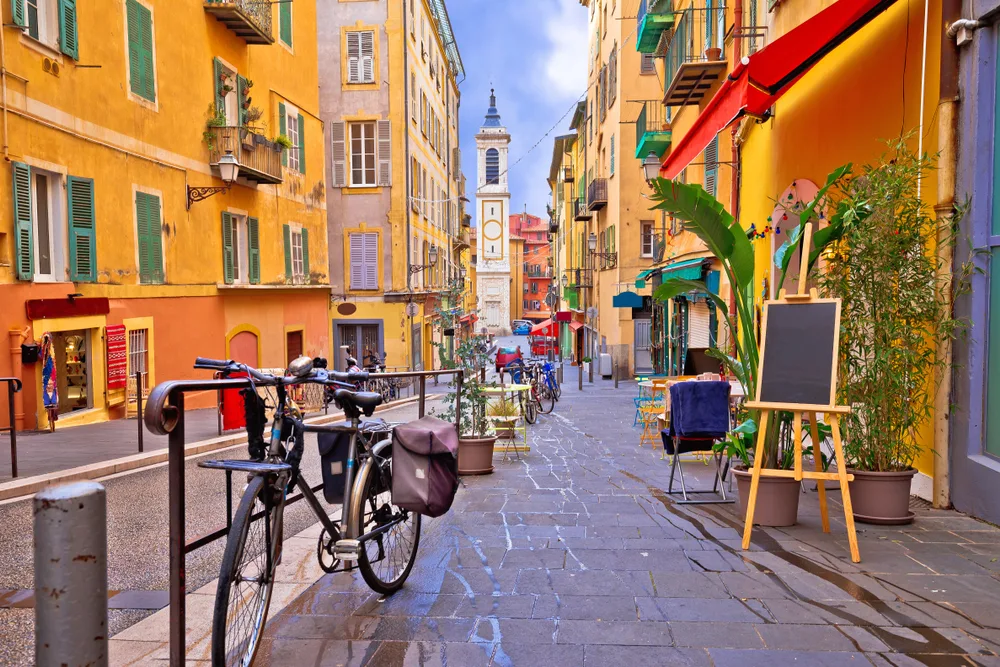
xbrchx/Shutterstock
The cheapest time to visit France is during the off-season, in November and then January-March. Most of the winter is a slower period for tourism in France since the weather can be dreary and downright cold.
However, there are a few exceptions. The country sees an uptick in visitors in December for the holiday season, especially in Alsace, which is famous for its Christmas markets.
This is also the most expensive time to visit the country’s ski resorts and Alpine towns. In most of France, winter is the least expensive time for accommodation. Even in pricey Paris, you can score hotel rooms in January for 30-50% off their normal rates.
In the normally expensive Cote d’Azur, you can get good hotel deals, sometimes even 60-70% off during the winter off-season. Getting to and around France is also a lot more affordable during the winter.
After the holiday rush, international flights tend to cost less in January and February. Air France often organizes sales, for example around the end of February, so keep an eye on websites to see when the prices drop.
The easiest (and most eco-friendly) way to travel around France is by train. Trains, especially the TGV, can get expensive, so book at least 90 days in advance, when discounted prices are available.
Least Busy Time to Visit France
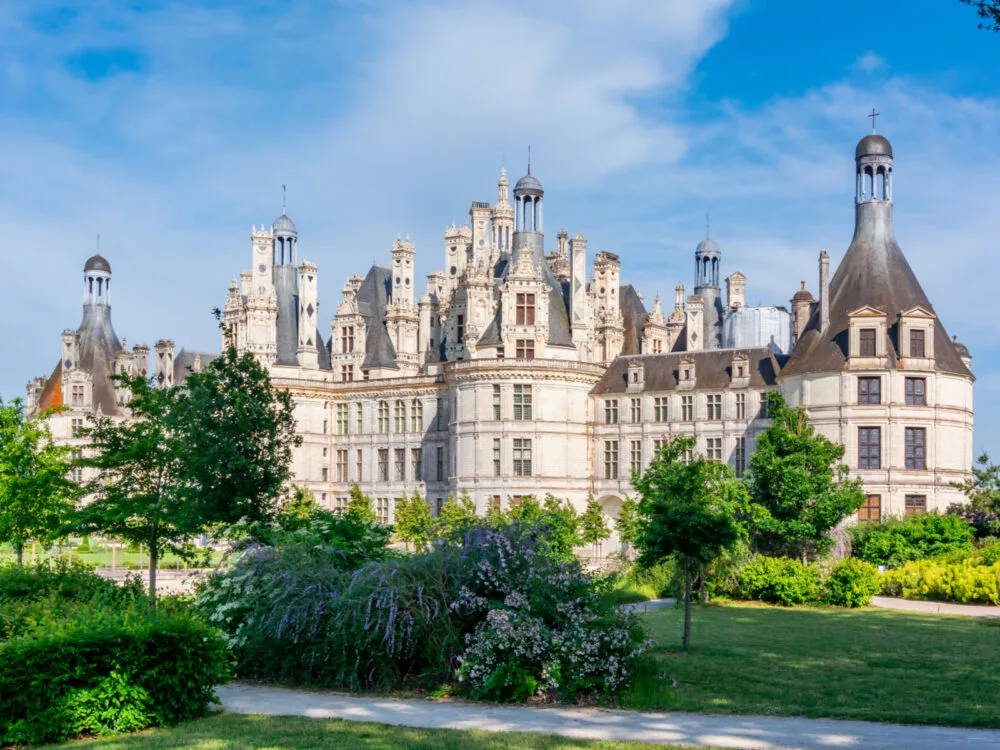
Mistervlad/Shutterstock
The least busy time to visit France is during the winter off-season, from November to March, when colder weather keeps people away. France gets cold in the winter, especially in mountainous regions and the north.
Average temperatures in Paris in January are at most about 44 degrees Fahrenheit, and persistent gray skies and cloud coverage can make the atmosphere seem dreary.
However, the loss of the sun-seeking tourist is your gain. This is one of the only seasons when you can see even popular tourist attractions such as the Eiffel Tower without crowds. According to the attraction’s official website, it hosts the fewest visitors in October, November, January, and February.
This is a good time to visit cities. The weather won’t be as much of a problem since there are many indoor attractions. While smaller towns may feel dead during the tourist off-season, cities such as Bordeaux and Lille are lively all year round.
The winter is one of the best times to visit the Cote d’Azur. Although it’s too cold for swimming, it’s still much warmer than many other parts of Europe, and a stroll by the sea is ideal.
There aren’t many people around at all, except for a few retirees, and it’s one of the only times southern France is accessible to budget travelers as well. Autumn, from late September to October, is also a good time to visit if you want fewer crowds.
This is one of the best times to visit wine-producing regions since it’s the harvest season, and you can enjoy local festivals such as the Fetes des Vendanges at Banyul-sur-Mer.
Worst Time to Visit France
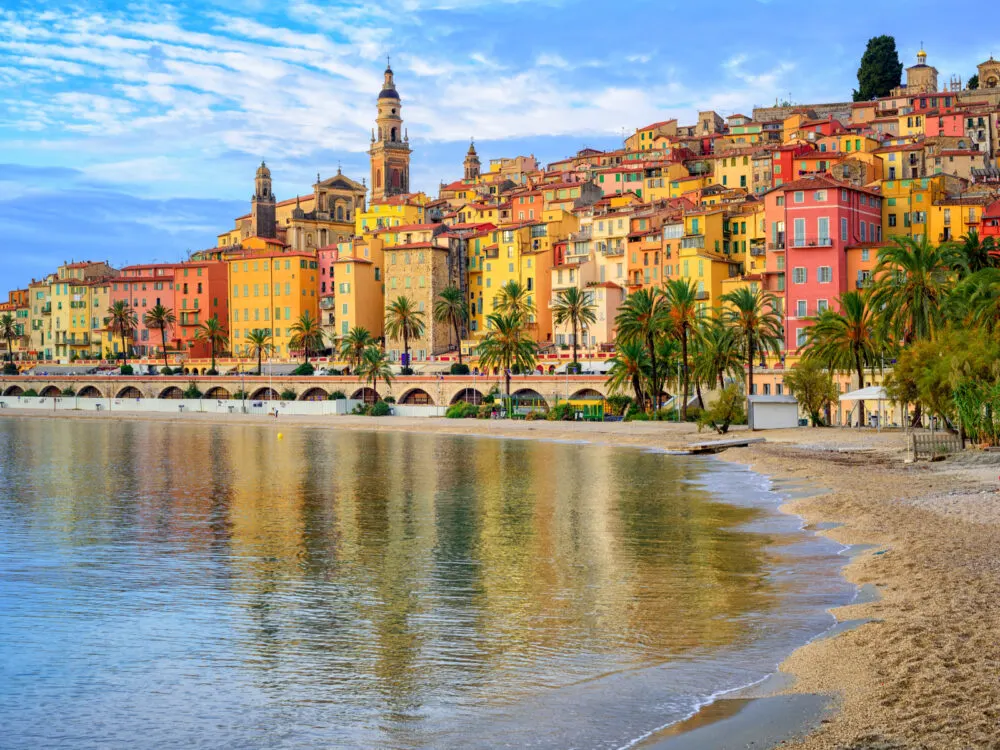
Boris Stroujko/Shutterstock
The worst time to visit France is during the summer, which is the peak tourist season. When you visit France in the summer, you truly understand that this is the most visited country in the world.
Most of the millions of visitors who come to the country visit during the summer. The Eiffel Tower and other popular Parisian attractions receive the highest number of visitors in July and August.
The problem of overtourism in popular sites such as Mont-Saint-Michel is so bad that the French government has attempted several different strategies to combat crowds.
Measures include entry fees even for outdoor locations, requiring advanced reservations, and even sharing photos of crowded locations to combat Instagram-friendly shoots and encourage people to stay away.
Besides fighting for your spot in line to enter popular attractions or a place to put down your beach towel, you’ll also have to deal with the heat. Summers in France have been getting hotter and hotter, especially in the concrete jungle of Paris or the southern coast.
During heat waves, Marseille can reach temperatures of 100 degrees Fahrenheit. However, summer is the liveliest season in France thanks to many outdoor music festivals, concert series, and more.
Events include:
- Paris-Plage (all summer long)
- Bastille Day (July 14th)
- Festival d’Avignon (July)
France by Month: Climate & Activities
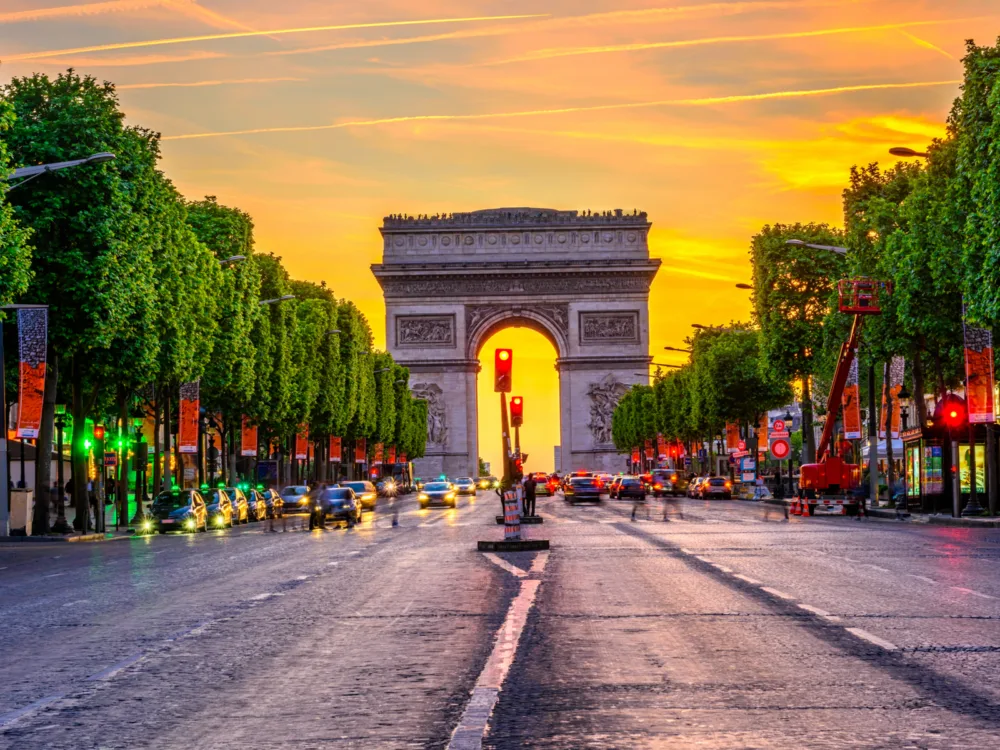
Catarina Belova/Shutterstock
Still unsure about the best time to visit France? Take a look at our summary of the weather and climate by month below:
January
Winter temperatures in France range from -1 to 7°C (30-45°F). It’s a cozy time to explore the festive holiday markets, visit iconic landmarks like the Eiffel Tower, and indulge in French cuisine in charming cafés.
February
Similar to January, February maintains cool temperatures between -1 to 8°C (30-46°F). Visitors can enjoy winter sports in the French Alps, explore the Louvre Museum in Paris, and experience the romantic ambiance of the city.
March
As spring begins, temperatures range from 3 to 13°C (37-55°F). March is perfect for witnessing the blooming cherry blossoms in Paris, wine tasting in the vineyards of Bordeaux, and exploring the picturesque villages of Provence.
April
Spring temperatures in France range from 6 to 16°C (43-61°F). It’s an ideal time for outdoor activities, such as hiking in the French Riviera, visiting the Palace of Versailles, and attending the Nice Carnival.
May
In May, France sees temperatures ranging from 10 to 20°C (50-68°F). It’s a great month for exploring the gardens of Giverny, participating in the Cannes Film Festival, and enjoying the mild weather in the Loire Valley.
June
Summer arrives with temperatures between 14 to 24°C (57-75°F). June offers opportunities for beach vacations in the French Riviera, attending music festivals like the Fête de la Musique, and exploring the lavender fields of Provence.
July
In July, France maintains warm temperatures from 17 to 28°C (63-82°F). It’s a peak month for tourism, with visitors enjoying the beaches of Nice, hiking in the French Alps, and celebrating Bastille Day with fireworks and parades.
August
Temperatures in August range from 17 to 28°C (63-82°F). It’s an ideal time for a countryside retreat in regions like Burgundy, exploring the medieval villages of Dordogne, and enjoying outdoor activities in the French Pyrenees.
September
As fall begins, temperatures range from 14 to 23°C (57-73°F). September offers a pleasant transition, with wine harvesting in Bordeaux, visiting the Mont Saint-Michel, and enjoying cultural events in cities like Lyon.
October
October sees temperatures ranging from 10 to 18°C (50-64°F). It’s a great month for admiring fall foliage in the Loire Valley, exploring the châteaux of the French countryside, and experiencing the cultural scene in Avignon.
November
In November, fall temperatures in France range from 4 to 12°C (39-54°F). November is perfect for cozying up in Parisian cafés, exploring the Christmas markets that start to open, and visiting the wine cellars of Champagne.
December
Winter returns with temperatures ranging from 0 to 8°C (32-46°F). December brings festive holiday decorations in cities like Strasbourg, skiing in the French Alps, and enjoying seasonal delicacies.
Frequently Asked Questions
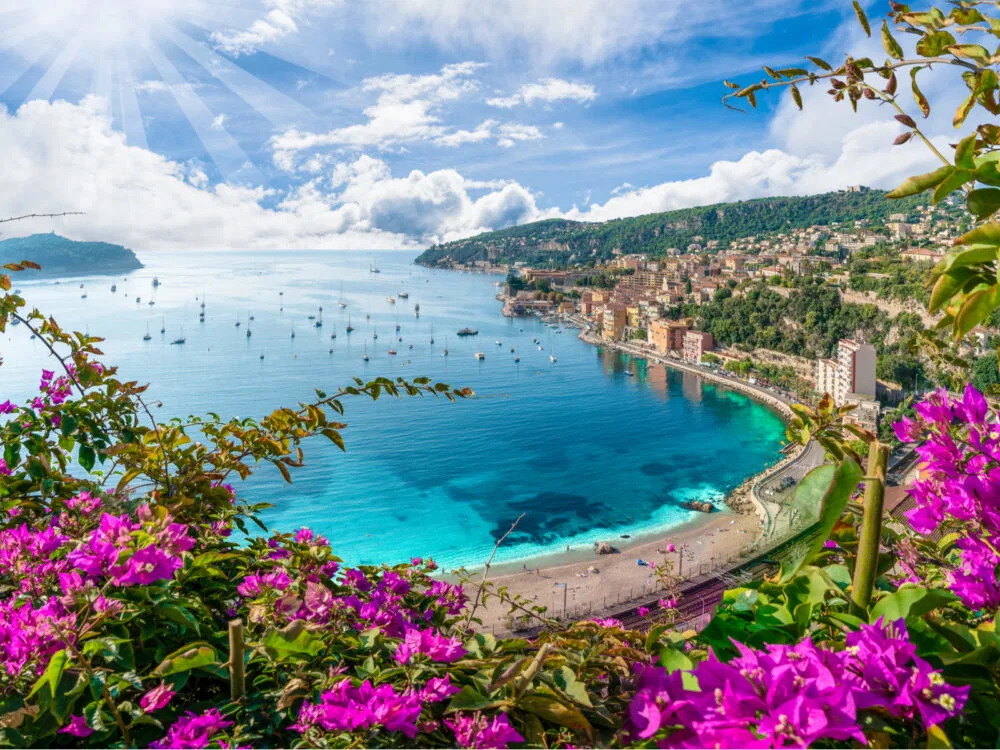
Balate Dorin/Shutterstock
Here are a few other questions that can help you pick the best time to visit France:
What months are less expensive to go to France?
The least expensive months to go to France are October, November, January, and February. You can also find good deals in March.
What are the best months to go to Paris?
The best months to go to Paris are the spring months (April-May) and fall (September-October) because you avoid the summer crowds.
What month is Nice, France, best?
Nice is the best in September and October. The water is still warm enough for swimming, but the summer crowds are gone, and you can find some good deals.
Is France better in spring or fall?
Both spring and fall are great times to visit. Fall is better for swimming because the water is warmer after a sunny summer, but spring tends to have more pleasant weather.
What is the rainy month in France?
The rainiest month in France is May, followed by December. However, fall has more persistent drizzles which can affect your mood.
So, What’s the Best Time to Visit France?
For the combination of the best weather and manageable crowds, France is at its best in late spring, although autumn is great too. Winter offers the best deals, and while summer has lots of crowds, it also has lots of festivals. However, you’ll love the country regardless of when you visit.
So, with so much to see and do and plenty of amazing times to visit, what are you waiting for — book your trip today and experience for yourself all that France has to offer. Happy travels!



